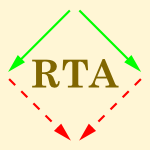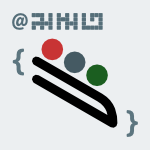229 papers:
 DocEng-2015-BanerjeeM #wiki
DocEng-2015-BanerjeeM #wiki- Filling the Gaps: Improving Wikipedia Stubs (SB, PM), pp. 117–120.
 ITiCSE-2015-FalknerSMST #gender
ITiCSE-2015-FalknerSMST #gender- Gender Gap in Academia: Perceptions of Female Computer Science Academics (KEF, CS, DM, AS, ST), pp. 111–116.
 ITiCSE-2015-GrandeP #gender #motivation #programming
ITiCSE-2015-GrandeP #gender #motivation #programming- Motivation and Grade Gap Related to Gender in a Programming Course (VG, JP), p. 349.
 CHI-2015-0001GH #challenge #design #framework #human-computer
CHI-2015-0001GH #challenge #design #framework #human-computer- Bridging the Theory-Practice Gap: Lessons and Challenges of Applying the Attachment Framework for Sustainable HCI Design (CR, SG, EMH), pp. 1305–1314.
 CHI-2015-HarboeH
CHI-2015-HarboeH- Real-World Affinity Diagramming Practices: Bridging the Paper-Digital Gap (GH, EMH), pp. 95–104.
 CSCW-2015-Anya #design #exclamation #question #what
CSCW-2015-Anya #design #exclamation #question #what- Bridge the Gap!: What Can Work Design in Crowdwork Learn from Work Design Theories? (OA), pp. 612–627.
 HCI-UC-2015-GandyBLLMCS #concept
HCI-UC-2015-GandyBLLMCS #concept- Midtown Buzz: Bridging the Gap Between Concepts and Impact in a Civic Computing Initiative (MG, LDB, LML, AJL, EDM, RJC, MS), pp. 303–313.
 ICEIS-v2-2015-CruzMS15a #modelling #process #set
ICEIS-v2-2015-CruzMS15a #modelling #process #set- Bridging the Gap between a Set of Interrelated Business Process Models and Software Models (EFC, RJM, MYS), pp. 338–345.
 ICML-2015-FercoqGS
ICML-2015-FercoqGS- Mind the duality gap: safer rules for the Lasso (OF, AG, JS), pp. 333–342.
 ICML-2015-SalimansKW #markov #monte carlo
ICML-2015-SalimansKW #markov #monte carlo- Markov Chain Monte Carlo and Variational Inference: Bridging the Gap (TS, DPK, MW), pp. 1218–1226.
 KDD-2015-GaoJOW
KDD-2015-GaoJOW- Selective Hashing: Closing the Gap between Radius Search and k-NN Search (JG, HVJ, BCO, SW), pp. 349–358.
 SIGIR-2015-GaoO #correlation
SIGIR-2015-GaoO #correlation- A Head-Weighted Gap-Sensitive Correlation Coefficient (NG, DWO), pp. 799–802.
 SPLC-2015-FerrariSGD #diagrams #documentation #feature model #natural language #tool support
SPLC-2015-FerrariSGD #diagrams #documentation #feature model #natural language #tool support- CMT and FDE: tools to bridge the gap between natural language documents and feature diagrams (AF, GOS, SG, FD), pp. 402–410.
 DRR-2014-NagyL #distance #similarity
DRR-2014-NagyL #distance #similarity- Form similarity via Levenshtein distance between ortho-filtered logarithmic ruling-gap ratios (GN, DPL), pp. 902106–8.
 HT-2014-LiaoJLH #case study #online
HT-2014-LiaoJLH #case study #online- A study of age gaps between online friends (LL, JJ, EPL, HH), pp. 98–106.
 VLDB-2014-ArenasDFKS #approach #graph
VLDB-2014-ArenasDFKS #approach #graph- A Principled Approach to Bridging the Gap between Graph Data and their Schemas (MA, GID, AF, AK, KS), pp. 601–612.
 MSR-2014-MurakamiHK #dataset
MSR-2014-MurakamiHK #dataset- A dataset of clone references with gaps (HM, YH, SK), pp. 412–415.
 LATA-2014-BednarovaG #automaton
LATA-2014-BednarovaG #automaton- Two Double-Exponential Gaps for Automata with a Limited Pushdown (ZB, VG), pp. 113–125.
 CSCW-2014-BodenRSW #coordination
CSCW-2014-BodenRSW #coordination- Articulation spaces: bridging the gap between formal and informal coordination (AB, FR, GS, VW), pp. 1120–1130.
 CSCW-2014-DuysburghEJ #collaboration #distributed
CSCW-2014-DuysburghEJ #collaboration #distributed- Exploring the social-technological gap in telesurgery: collaboration within distributed or teams (PD, SAE, AJ), pp. 1537–1548.
 CSCW-2014-HuangWY #comprehension #online #social
CSCW-2014-HuangWY #comprehension #online #social- De-virtualizing social events: understanding the gap between online and offline participation for event invitations (AJH, HCW, CWY), pp. 436–448.
 DUXU-TMT-2014-SchmidtKGSGW #education
DUXU-TMT-2014-SchmidtKGSGW #education- Bridging the Gap — Methods and Teaching of F-A-S-T — Framing-Art-Science- Technology (DS, GK, SG, CS, RG, MW), pp. 589–600.
 HCI-AS-2014-GheitasyANR #case study #collaboration #design #online #social
HCI-AS-2014-GheitasyANR #case study #collaboration #design #online #social- Designing for Online Collaborative Consumption: A Study of Sociotechnical Gaps and Social Capital (AG, JLAN, BAN, DR), pp. 683–692.
 HCI-AS-2014-KimC #what
HCI-AS-2014-KimC #what- The Gap between What a Service Provider Shows Off and What Users Really Watch (DK, JC), pp. 710–720.
 HCI-AS-2014-KwiatkowskaSL #design
HCI-AS-2014-KwiatkowskaSL #design- Design Artefacts as Business Decision Prompts: Tackling the Design and Business Values Gap (JK, AS, DL), pp. 721–730.
 HIMI-AS-2014-HaysahiH #collaboration #concept
HIMI-AS-2014-HaysahiH #collaboration #concept- Kit-Build Concept Mapping for Being Aware of the Gap of Exchanged Information in Collaborative Reading of the Literature (YH, TH), pp. 32–41.
 SCSM-2014-BeckmannG #social
SCSM-2014-BeckmannG #social- Social Computing — Bridging the Gap between the Social and the Technical (CB, TG), pp. 25–36.
 ICML-c1-2014-DenilMF #random
ICML-c1-2014-DenilMF #random- Narrowing the Gap: Random Forests In Theory and In Practice (MD, DM, NdF), pp. 665–673.
 ICPR-2014-HafnerLUW #classification
ICPR-2014-HafnerLUW #classification- Bridging the Resolution Gap between Endoscope Types for a Colonic Polyp Classification (MH, ML, AU, GW), pp. 2739–2744.
 KDD-2014-TagamiHTOTT
KDD-2014-TagamiHTOTT- Filling context-ad vocabulary gaps with click logs (YT, TH, YT, SO, KT, AT), pp. 1955–1964.
 KEOD-2014-Lesot
KEOD-2014-Lesot- Bridging the Emotional Gap — From Objective Representations to Subjective Interpretations (MJL), pp. 1–15.
 KMIS-2014-Muthaiyah #implementation #information management #theory and practice
KMIS-2014-Muthaiyah #implementation #information management #theory and practice- Knowledge Management Technology Implementation — Bridging the Gap between Theory and Practice (SM), pp. 393–399.
 SIGIR-2014-CeroniTKN #using
SIGIR-2014-CeroniTKN #using- Bridging temporal context gaps using time-aware re-contextualization (AC, NKT, NK, CN), pp. 1127–1130.
 RE-2014-AnishG #analysis #requirements
RE-2014-AnishG #analysis #requirements- Product knowledge configurator for requirements gap analysis and customizations (PRA, SG), pp. 437–443.
 ICSE-2014-RempelMKC #consistency #guidelines #traceability
ICSE-2014-RempelMKC #consistency #guidelines #traceability- Mind the gap: assessing the conformance of software traceability to relevant guidelines (PR, PM, TK, JCH), pp. 943–954.
 DATE-2013-GoultiaevaSB
DATE-2013-GoultiaevaSB- Bridging the gap between dual propagation and CNF-based QBF solving (AG, MS, AB), pp. 811–814.
 SIGMOD-2013-MiliarakiBGZ #mining #scalability #sequence
SIGMOD-2013-MiliarakiBGZ #mining #scalability #sequence- Mind the gap: large-scale frequent sequence mining (IM, KB, RG, SZ), pp. 797–808.
 CSEET-2013-NgH #education #framework #industrial #named #re-engineering
CSEET-2013-NgH #education #framework #industrial #named #re-engineering- Essence: A framework to help bridge the gap between software engineering education and industry needs (PWN, SH), pp. 304–308.
 ICPC-2013-MurakamiHHIK #analysis #clone detection #detection #lightweight #source code
ICPC-2013-MurakamiHHIK #analysis #clone detection #detection #lightweight #source code- Gapped code clone detection with lightweight source code analysis (HM, KH, YH, HI, SK), pp. 93–102.
 STOC-2013-KwokLLGT #algorithm #analysis #clustering #difference #higher-order
STOC-2013-KwokLLGT #algorithm #analysis #clustering #difference #higher-order- Improved Cheeger’s inequality: analysis of spectral partitioning algorithms through higher order spectral gap (TCK, LCL, YTL, SOG, LT), pp. 11–20.
 LATA-2013-SippuS #multi #online
LATA-2013-SippuS #multi #online- Online Matching of Multiple Regular Patterns with Gaps and Character Classes (SS, ESS), pp. 523–534.
 IFL-2013-PetersenALG #haskell
IFL-2013-PetersenALG #haskell- Measuring the Haskell Gap (LP, TAA, HL, NG), p. 61.
 CHI-2013-HeklerKFB #behaviour #human-computer #research #using
CHI-2013-HeklerKFB #behaviour #human-computer #research #using- Mind the theoretical gap: interpreting, using, and developing behavioral theory in HCI research (EBH, PVK, JF, MPB), pp. 3307–3316.
 DUXU-CXC-2013-ThianthaiZ #enterprise #gamification
DUXU-CXC-2013-ThianthaiZ #enterprise #gamification- Bridging the Gap between Consumer and Enterprise Applications through Gamification (TT, BZ), pp. 602–607.
 HCI-UC-2013-Baguma #design #mobile #recommendation
HCI-UC-2013-Baguma #design #mobile #recommendation- Mobile Money Services in Uganda: Design Gaps and Recommendations (RB), pp. 249–258.
 ICEIS-J-2013-DiefenthalerB13a #architecture #enterprise
ICEIS-J-2013-DiefenthalerB13a #architecture #enterprise- From Gaps to Transformation Paths in Enterprise Architecture Planning (PD, BB), pp. 474–489.
 ICEIS-v1-2013-PiazzaR #implementation #modelling #multi #problem
ICEIS-v1-2013-PiazzaR #implementation #modelling #multi #problem- Bridging the Gap between Multidimensional Business Problem Formulation and the Implementation of Multidimensional Data Models (FP, FR), pp. 79–87.
 ICEIS-v3-2013-DiefenthalerB #analysis #architecture #enterprise #semantics #using #web
ICEIS-v3-2013-DiefenthalerB #analysis #architecture #enterprise #semantics #using #web- Gap Analysis in Enterprise Architecture using Semantic Web Technologies (PD, BB), pp. 211–220.
 MLDM-2013-OnoderaS #kernel
MLDM-2013-OnoderaS #kernel- The Gapped Spectrum Kernel for Support Vector Machines (TO, TS), pp. 1–15.
 MLDM-2013-SentzH #analysis
MLDM-2013-SentzH #analysis- Information Gap Analysis for Decision Support Systems in Evidence-Based Medicine (KS, FMH), pp. 543–554.
 ESEC-FSE-2013-GyoriFDL #functional #imperative #programming #refactoring
ESEC-FSE-2013-GyoriFDL #functional #imperative #programming #refactoring- Crossing the gap from imperative to functional programming through refactoring (AG, LF, DD, JL), pp. 543–553.
 ICSE-2013-ZhangH0RM #testing
ICSE-2013-ZhangH0RM #testing- Bridging the gap between the total and additional test-case prioritization strategies (LZ, DH, LZ, GR, HM), pp. 192–201.
 SPLC-2013-DumitrescuMSD #experience #modelling #product line #variability
SPLC-2013-DumitrescuMSD #experience #modelling #product line #variability- Bridging the gap between product lines and systems engineering: an experience in variability management for automotive model based systems engineering (CD, RM, CS, AD), pp. 254–263.
 HPCA-2013-NereHLT #behaviour #biology #semantic gap
HPCA-2013-NereHLT #behaviour #biology #semantic gap- Bridging the semantic gap: Emulating biological neuronal behaviors with simple digital neurons (AN, AH, MHL, GT), pp. 472–483.
 VLDB-2012-KotsifakosPHGAK #named #sequence
VLDB-2012-KotsifakosPHGAK #named #sequence- Hum-a-song: A Subsequence Matching with Gaps-Range-Tolerances Query-By-Humming System (AK, PP, JH, DG, VA, GK), pp. 1930–1933.
 VLDB-2012-YangLW #database #named #sequence
VLDB-2012-YangLW #database #named #sequence- ALAE: Accelerating Local Alignment with Affine Gap Exactly in Biosequence Databases (XY, HL, BW), pp. 1507–1518.
 STOC-2012-GoemansORZ
STOC-2012-GoemansORZ- Matroids and integrality gaps for hypergraphic steiner tree relaxations (MXG, NO, TR, RZ), pp. 1161–1176.
 LATA-2012-Bozzelli #abstraction #constraints #termination
LATA-2012-Bozzelli #abstraction #constraints #termination- Strong Termination for Gap-Order Constraint Abstractions of Counter Systems (LB), pp. 155–168.
 ICGT-2012-GolasLEG #flexibility #formal method #graph grammar #towards
ICGT-2012-GolasLEG #flexibility #formal method #graph grammar #towards- Toward Bridging the Gap between Formal Foundations and Current Practice for Triple Graph Grammars — Flexible Relations between Source and Target Elements (UG, LL, HE, HG), pp. 141–155.
 CHI-2012-BaoHCQHG #named #wiki
CHI-2012-BaoHCQHG #named #wiki- Omnipedia: bridging the wikipedia language gap (PB, BH, SC, MQ, MSH, DG), pp. 1075–1084.
 CSCW-2012-CollierB #empirical #gender #wiki
CSCW-2012-CollierB #empirical #gender #wiki- Conflict, criticism, or confidence: an empirical examination of the gender gap in wikipedia contributions (BC, JB), pp. 383–392.
 ICML-2012-ShanKRBSR #matrix #predict #probability #using
ICML-2012-ShanKRBSR #matrix #predict #probability #using- Gap Filling in the Plant Kingdom — Trait Prediction Using Hierarchical Probabilistic Matrix Factorization (HS, JK, PBR, AB, FS, MR), p. 47.
 ICPR-2012-ShivakumaraHZTP #video
ICPR-2012-ShivakumaraHZTP #video- A new Iterative-Midpoint-Method for video character gap filling (PS, DBH, DZ, CLT, UP), pp. 673–676.
 ECMFA-2012-YueA #case study #industrial #non-functional #requirements #state machine #testing
ECMFA-2012-YueA #case study #industrial #non-functional #requirements #state machine #testing- Bridging the Gap between Requirements and Aspect State Machines to Support Non-functional Testing: Industrial Case Studies (TY, SA), pp. 133–145.
 SAC-2012-ZhaoLCSS #information management #modelling #process #question
SAC-2012-ZhaoLCSS #information management #modelling #process #question- Can business process modeling bridge the gap between business and information systems? (LZ, KL, EVC, SdFMS, PS), pp. 1723–1724.
 TAP-2012-ArmandoPCMB #automation #model checking #protocol #security #testing
TAP-2012-ArmandoPCMB #automation #model checking #protocol #security #testing- From Model-Checking to Automated Testing of Security Protocols: Bridging the Gap (AA, GP, RC, AM, DB), pp. 3–18.
 VMCAI-2012-BozzelliP #abstraction #constraints #verification
VMCAI-2012-BozzelliP #abstraction #constraints #verification- Verification of Gap-Order Constraint Abstractions of Counter Systems (LB, SP), pp. 88–103.
 ICDAR-2011-CoustatyBBL #algorithm #image #ontology #semantic gap #using
ICDAR-2011-CoustatyBBL #algorithm #image #ontology #semantic gap #using- Using Ontologies to Reduce the Semantic Gap between Historians and Image Processing Algorithms (MC, AB, KB, GL), pp. 156–160.
 VLDB-2011-KotsifakosPHG #framework #sequence
VLDB-2011-KotsifakosPHG #framework #sequence- A Subsequence Matching with Gaps-Range-Tolerances Framework: A Query-By-Humming Application (AK, PP, JH, DG), pp. 761–771.
 STOC-2011-ChakrabartiR #bound #communication #complexity
STOC-2011-ChakrabartiR #bound #communication #complexity- An optimal lower bound on the communication complexity of gap-hamming-distance (AC, OR), pp. 51–60.
 ICALP-v1-2011-AustrinK #distance #problem #reduction
ICALP-v1-2011-AustrinK #distance #problem #reduction- A Simple Deterministic Reduction for the Gap Minimum Distance of Code Problem (PA, SK), pp. 474–485.
 CHI-2011-HartmannDC #named #web
CHI-2011-HartmannDC #named #web- HyperSource: bridging the gap between source and code-related web sites (BH, MD, MKC), pp. 2207–2210.
 CHI-2011-RaderEC
CHI-2011-RaderEC- Brick by brick: iterating interventions to bridge the achievement gap with virtual peers (ER, ME, JC), pp. 2971–2974.
 HCD-2011-LinC #research #social #social media
HCD-2011-LinC #research #social #social media- Bridging the Social Media Usage Gap from Old to New: An Elderly Media Interpersonal and Social Research in Taiwan (SHL, WHC), pp. 547–555.
 HCI-MIIE-2011-LinH #adaptation #performance #predict
HCI-MIIE-2011-LinH #adaptation #performance #predict- Predicting the Effects of Time-Gaps for Adaptive Cruise Control (ACC) on Bus Driver Performance (BTWL, SLH), pp. 435–443.
 OCSC-2011-TsaiHT #network #social
OCSC-2011-TsaiHT #network #social- An Investigation into the Social Network between Three Generations in a Household: Bridging the Interrogational Gaps between the Senior and the Youth (THT, YLH, KCT), pp. 277–286.
 CAiSE-2011-MoosaviLLP #collaboration #named
CAiSE-2011-MoosaviLLP #collaboration #named- ONTECTAS: Bridging the Gap between Collaborative Tagging Systems and Structured Data (AM, TL, LVSL, RP), pp. 436–451.
 ICEIS-J-2011-MeisenMSJ11a #adaptation #integration #semantic gap #simulation
ICEIS-J-2011-MeisenMSJ11a #adaptation #integration #semantic gap #simulation- Adaptive Information Integration: Bridging the Semantic Gap between Numerical Simulations (TM, PM, DS, SJ), pp. 51–65.
 CIKM-2011-MomtaziK #retrieval
CIKM-2011-MomtaziK #retrieval- Trained trigger language model for sentence retrieval in QA: bridging the vocabulary gap (SM, DK), pp. 2005–2008.
 MoDELS-2011-ClavreulMBF #architecture #behaviour #modelling
MoDELS-2011-ClavreulMBF #architecture #behaviour #modelling- Service-Oriented Architecture Modeling: Bridging the Gap between Structure and Behavior (MC, SM, MBF, RBF), pp. 289–303.
 MoDELS-2011-ClavreulMBF #architecture #behaviour #modelling
MoDELS-2011-ClavreulMBF #architecture #behaviour #modelling- Service-Oriented Architecture Modeling: Bridging the Gap between Structure and Behavior (MC, SM, MBF, RBF), pp. 289–303.
 PPDP-2011-SauthoffJG #declarative #programming
PPDP-2011-SauthoffJG #declarative #programming- Bellman’s GAP: a declarative language for dynamic programming (GS, SJ, RG), pp. 29–40.
 RE-2011-BjarnasonWR #case study #communication #development #requirements #scalability
RE-2011-BjarnasonWR #case study #communication #development #requirements #scalability- Requirements are slipping through the gaps — A case study on causes & effects of communication gaps in large-scale software development (EB, KW, BR), pp. 37–46.
 SAC-2011-EbraertSJ #design #diagrams #feature model #implementation
SAC-2011-EbraertSJ #design #diagrams #feature model #implementation- Change-based FODA diagrams: bridging the gap between feature-oriented design and implementation (PE, QDS, DJ), pp. 1345–1352.
 LDTA-2011-GiegerichS #analysis #compilation
LDTA-2011-GiegerichS #analysis #compilation- Yield grammar analysis in the Bellman’s GAP compiler (RG, GS), p. 7.
 CBSE-2010-SuryadevaraKSP #embedded #modelling #semantic gap
CBSE-2010-SuryadevaraKSP #embedded #modelling #semantic gap- Bridging the Semantic Gap between Abstract Models of Embedded Systems (JS, EYK, CCS, PP), pp. 55–73.
 DATE-2010-MischkallaH0 #modelling #simulation #synthesis #uml
DATE-2010-MischkallaH0 #modelling #simulation #synthesis #uml- Closing the gap between UML-based modeling, simulation and synthesis of combined HW/SW systems (FM, DH, WM), pp. 1201–1206.
 DocEng-2010-QuintRSV #editing
DocEng-2010-QuintRSV #editing- From templates to schemas: bridging the gap between free editing and safe data processing (VQ, CR, SS, CV), pp. 61–64.
 HT-2010-GasslerZTS #named #recommendation #using
HT-2010-GasslerZTS #named #recommendation #using- SnoopyDB: narrowing the gap between structured and unstructured information using recommendations (WG, EZ, MT, GS), pp. 271–272.
 PEPM-2010-MossP #implementation #performance
PEPM-2010-MossP #implementation #performance- Bridging the gap between symbolic and efficient AES implementations (AM, DP), pp. 101–110.
 ICALP-v1-2010-GuruswamiKOPTW
ICALP-v1-2010-GuruswamiKOPTW- SDP Gaps for 2-to-1 and Other Label-Cover Variants (VG, SK, RO, PP, MT, YW), pp. 617–628.
 CIKM-2010-PobleteBMB #graph #image #query #retrieval #semantic gap #using #web
CIKM-2010-PobleteBMB #graph #image #query #retrieval #semantic gap #using #web- Visual-semantic graphs: using queries to reduce the semantic gap in web image retrieval (BP, BB, MM, JMB), pp. 1553–1556.
 KR-2010-Thielscher #calculus
KR-2010-Thielscher #calculus- Integrating Action Calculi and AgentSpeak: Closing the Gap (MT).
 ICSE-2010-BudnikCK #automation #testing #theory and practice
ICSE-2010-BudnikCK #automation #testing #theory and practice- Bridging the Gap Between the Theory and Practice of Software Test Automation (CJB, WKC, GMK), pp. 445–446.
 ICSE-2010-ErfurthR #aspect-oriented #named #requirements #uml
ICSE-2010-ErfurthR #aspect-oriented #named #requirements #uml- CUTA4UML: bridging the gap between informal and formal requirements for dynamic system aspects (IE, WR), pp. 171–174.
 RTA-2010-AvanziniM #complexity #runtime
RTA-2010-AvanziniM #complexity #runtime- Closing the Gap Between Runtime Complexity and Polytime Computability (MA, GM), pp. 33–48.
 DATE-2009-GraciaMVBV #latency
DATE-2009-GraciaMVBV #latency- Light NUCA: A proposal for bridging the inter-cache latency gap (DSG, TM, FV, RB, VV), pp. 530–535.
 DATE-2009-XuVJ #runtime
DATE-2009-XuVJ #runtime- Selective light Vth hopping (SLITH): Bridging the gap between runtime dynamic and leakage (HX, RV, WBJ), pp. 594–597.
 VLDB-2009-ArenasPRR #theory and practice
VLDB-2009-ArenasPRR #theory and practice- Inverting Schema Mappings: Bridging the Gap between Theory and Practice (MA, JP, JLR, CR), pp. 1018–1029.
 CSEET-2009-Subrahmanyam #education #framework #re-engineering
CSEET-2009-Subrahmanyam #education #framework #re-engineering- A Dynamic Framework for Software Engineering Education Curriculum to Reduce the Gap between the Software Organizations and Software Educational Institutions (GVBS), pp. 248–254.
 ITiCSE-2009-BlasGMB #analysis #automation #composition #using
ITiCSE-2009-BlasGMB #analysis #automation #composition #using- Automatic E-learning contents composition by using gap analysis techniques (JMdB, JMG, LdM, RB), p. 369.
 TACAS-2009-Miller #development #model checking #modelling
TACAS-2009-Miller #development #model checking #modelling- Bridging the Gap Between Model-Based Development and Model Checking (SPM), pp. 443–453.
 STOC-2009-AharonovALV #detection #quantum
STOC-2009-AharonovALV #detection #quantum- The detectability lemma and quantum gap amplification (DA, IA, ZL, UVV), pp. 417–426.
 STOC-2009-CharikarMM
STOC-2009-CharikarMM- Integrality gaps for Sherali-Adams relaxations (MC, KM, YM), pp. 283–292.
 STOC-2009-ChengW #distance #problem #reduction
STOC-2009-ChengW #distance #problem #reduction- A deterministic reduction for the gap minimum distance problem: [extended abstract] (QC, DW), pp. 33–38.
 STOC-2009-Tulsiani #csp #reduction
STOC-2009-Tulsiani #csp #reduction- CSP gaps and reductions in the lasserre hierarchy (MT), pp. 303–312.
 CHI-2009-WeissWJJKHB #physics
CHI-2009-WeissWJJKHB #physics- SLAP widgets: bridging the gap between virtual and physical controls on tabletops (MW, JW, YJ, RJ, RK, JDH, JOB), pp. 481–490.
 DHM-2009-RobbinsCM #architecture #human-computer #modelling
DHM-2009-RobbinsCM #architecture #human-computer #modelling- Bridging the Gap between HCI and DHM: The Modeling of Spatial Awareness within a Cognitive Architecture (BR, DWC, AM), pp. 295–304.
 HCD-2009-MerlinHR #concept #evolution #multi
HCD-2009-MerlinHR #concept #evolution #multi- Bridging Software Evolution’s Gap: The Multilayer Concept (BM, CH, MR), pp. 266–275.
 ICEIS-HCI-2009-FeczakH #coordination #network #open source #social
ICEIS-HCI-2009-FeczakH #coordination #network #open source #social- Measuring Coordination Gaps of Open Source Groups through Social Networks (SF, LH), pp. 84–90.
 CIKM-2009-WangZZ09a #information management #network
CIKM-2009-WangZZ09a #information management #network- Bridging the gap: complex networks meet information and knowledge management (JW, SZ, DZ), pp. 2113–2114.
 KDD-2009-PanS #collaboration #scalability
KDD-2009-PanS #collaboration #scalability- Mind the gaps: weighting the unknown in large-scale one-class collaborative filtering (RP, MS), pp. 667–676.
 SEKE-2009-BifflSM #automation #ontology #semantic gap
SEKE-2009-BifflSM #automation #ontology #semantic gap- Bridging Semantic Gaps Between Stakeholders in the Production Automation Domain with Ontology Areas (SB, WDS, TM), pp. 233–239.
 GPCE-2009-Nikhil #design #hardware #using
GPCE-2009-Nikhil #design #hardware #using- Using GPCE principles for hardware systems and accelerators: (bridging the gap to HW design) (RSN), pp. 1–2.
 RE-2009-HeiskariKRM #requirements #usability
RE-2009-HeiskariKRM #requirements #usability- Bridging the Gap Between Usability and Requirements Engineering (JH, MK, MR, TM), pp. 303–308.
 ICSE-2009-TreudeS #aspect-oriented #development #how #social
ICSE-2009-TreudeS #aspect-oriented #development #how #social- How tagging helps bridge the gap between social and technical aspects in software development (CT, MADS), pp. 12–22.
 SLE-2009-HeidenreichJSW #java #modelling
SLE-2009-HeidenreichJSW #java #modelling- Closing the Gap between Modelling and Java (FH, JJ, MS, CW), pp. 374–383.
 HPCA-2009-FanKDM #programmable
HPCA-2009-FanKDM #programmable- Bridging the computation gap between programmable processors and hardwired accelerators (KF, MK, GSD, SAM), pp. 313–322.
 ASE-2008-RuengmeeFBRL #aspect-oriented #editing #programming #usability
ASE-2008-RuengmeeFBRL #aspect-oriented #editing #programming #usability- XE (eXtreme Editor) — Bridging the Aspect-Oriented Programming Usability Gap (WR, RSSF, SKB, DFR, CVL), pp. 435–438.
 DATE-2008-TenentesKK #testing
DATE-2008-TenentesKK #testing- State Skip LFSRs: Bridging the Gap between Test Data Compression and Test Set Embedding for IP Cores (VT, XK, EK), pp. 474–479.
 SIGMOD-2008-CecchetCA #database #middleware #replication #theory and practice
SIGMOD-2008-CecchetCA #database #middleware #replication #theory and practice- Middleware-based database replication: the gaps between theory and practice (EC, GC, AA), pp. 739–752.
 STOC-2008-ManokaranNRS #metric #multi
STOC-2008-ManokaranNRS #metric #multi- Sdp gaps and ugc hardness for multiway cut, 0-extension, and metric labeling (RM, JN, PR, RS), pp. 11–20.
 SEFM-2008-LaneseGMZ
SEFM-2008-LaneseGMZ- Bridging the Gap between Interaction- and Process-Oriented Choreographies (IL, CG, FM, GZ), pp. 323–332.
 ICEIS-AIDSS-2008-Zacharias
ICEIS-AIDSS-2008-Zacharias- Rules as Simple Way to Model Knowledge — Closing the Gap between Promise and Reality (VZ), pp. 87–94.
 ICEIS-ISAS2-2008-Kumlander #development #nondeterminism
ICEIS-ISAS2-2008-Kumlander #development #nondeterminism- Bridging Uncertainties Gaps in Software Development Projects (DK), pp. 240–245.
 SEKE-2008-ScheithauerWT #documentation #execution #process #semantic gap
SEKE-2008-ScheithauerWT #documentation #execution #process #semantic gap- Bridging the Semantic Gap Between Process Documentation and Process Execution (GS, GW, CT), pp. 549–554.
 SEKE-2008-Wotawa #modelling #slicing
SEKE-2008-Wotawa #modelling #slicing- Bridging the Gap Between Slicing and Model-based Diagnosis (FW), pp. 836–841.
 SEKE-2008-ZhouRF #case study #component #development #estimation #reuse
SEKE-2008-ZhouRF #case study #component #development #estimation #reuse- Supporting Reusable Component Selection with Use Case Gap-based Development Effort Estimation (XZ, BR, CF), pp. 155–166.
 SIGIR-2008-WangZZ #image #learning #retrieval #semantic gap #web
SIGIR-2008-WangZZ #image #learning #retrieval #semantic gap #web- Learning to reduce the semantic gap in web image retrieval and annotation (CW, LZ, HJZ), pp. 355–362.
 ICMT-2008-AmstelBPV #algebra #modelling #process #question #semantic gap #state machine #uml
ICMT-2008-AmstelBPV #algebra #modelling #process #question #semantic gap #state machine #uml- Transforming Process Algebra Models into UML State Machines: Bridging a Semantic Gap? (MvA, MvdB, ZP, TV), pp. 61–75.
 HPCA-2008-LinLDZZS #clustering #manycore #simulation
HPCA-2008-LinLDZZS #clustering #manycore #simulation- Gaining insights into multicore cache partitioning: Bridging the gap between simulation and real systems (JL, QL, XD, ZZ, XZ, PS), pp. 367–378.
 DATE-2007-PatelS #abstraction
DATE-2007-PatelS #abstraction- Tackling an abstraction gap: co-simulating SystemC DE with bluespec ESL (HDP, SKS), pp. 279–284.
 STOC-2007-ChuzhoyK #polynomial #problem
STOC-2007-ChuzhoyK #polynomial #problem- Polynomial flow-cut gaps and hardness of directed cut problems (JC, SK), pp. 179–188.
 STOC-2007-Dantchev #complexity #proving #rank
STOC-2007-Dantchev #complexity #proving #rank- Rank complexity gap for Lovász-Schrijver and Sherali-Adams proof systems (SSD), pp. 311–317.
 STOC-2007-SchoenebeckTT
STOC-2007-SchoenebeckTT- Tight integrality gaps for Lovasz-Schrijver LP relaxations of vertex cover and max cut (GS, LT, MT), pp. 302–310.
 LATA-2007-AntoniouCIP #set #string
LATA-2007-AntoniouCIP #set #string- Application of suffix trees for the acquisition of common motifs with gaps in a set of strings (PA, MC, CSI, PP), pp. 57–66.
 DHM-2007-Feyen #interactive #modelling
DHM-2007-Feyen #interactive #modelling- Bridging the Gap: Exploring Interactions Between Digital Human Models and Cognitive Models (RF), pp. 382–391.
 DHM-2007-LiWW
DHM-2007-LiWW- The Effects of the False Vocal Fold Gaps in a Model of the Larynx on Pressures Distributions and Flows (SL, MW, SW), pp. 147–156.
 HCI-IDU-2007-ChenA #comprehension #design
HCI-IDU-2007-ChenA #comprehension #design- Context-Centered Design: Bridging the Gap Between Understanding and Designing (YC, MEA), pp. 40–48.
 ICEIS-EIS-2007-AddinquyT #enterprise #requirements #specification #using
ICEIS-EIS-2007-AddinquyT #enterprise #requirements #specification #using- Reducing Requirements to EIS Specifications GAP Using RM-ODP Enterprise Viewpoint (CA, BT), pp. 31–38.
 SAC-2007-Teo #adaptation #algorithm #generative #optimisation
SAC-2007-Teo #adaptation #algorithm #generative #optimisation- Investigating adaptive mutation in the generalized generation gap (G3) algorithm for unconstrained global optimization (JT), pp. 743–744.
 VLDB-2006-ChenLSDC #database #image #named #query #scalability #semantic gap
VLDB-2006-ChenLSDC #database #image #named #query #scalability #semantic gap- HISA: A Query System Bridging The Semantic Gap For Large Image Databases (GC, XL, LS, JD, CC), pp. 1187–1190.
 ITiCSE-2006-GharibyanG #case study #gender
ITiCSE-2006-GharibyanG #case study #gender- Gender gap in computer science does not exist in one former soviet republic: results of a study (HG, SG), pp. 222–226.
 STOC-2006-DevanurKSV #linear #problem
STOC-2006-DevanurKSV #linear #problem- Integrality gaps for sparsest cut and minimum linear arrangement problems (NRD, SK, RS, NKV), pp. 537–546.
 STOC-2006-Dinur #theorem
STOC-2006-Dinur #theorem- The PCP theorem by gap amplification (ID), pp. 241–250.
 CIAA-2006-AntoniouHIMP #automaton #finite #using
CIAA-2006-AntoniouHIMP #automaton #finite #using- Finding Common Motifs with Gaps Using Finite Automata (PA, JH, CSI, BM, PP), pp. 69–77.
 DLT-2006-MrazOP #on the
DLT-2006-MrazOP #on the- On the Gap-Complexity of Simple RL-Automata (FM, FO, MP), pp. 83–94.
 ICALP-v1-2006-Coja-OghlanL #graph #random
ICALP-v1-2006-Coja-OghlanL #graph #random- The Spectral Gap of Random Graphs with Given Expected Degrees (ACO, AL), pp. 15–26.
 ICALP-v1-2006-Radhakrishnan #lazy evaluation #random #using
ICALP-v1-2006-Radhakrishnan #lazy evaluation #random #using- Gap Amplification in PCPs Using Lazy Random Walks (JR), pp. 96–107.
 QAPL-2005-Siveroni06 #algorithm
QAPL-2005-Siveroni06 #algorithm- Filling Out the Gaps: A Padding Algorithm for Transforming Out Timing Leaks (IS), pp. 241–257.
 ICSE-2006-ThompsonE #education #industrial #re-engineering
ICSE-2006-ThompsonE #education #industrial #re-engineering- Third international summit on software engineering education (SSEE III): bridging the university/industry gap (JBT, HME), pp. 1011–1012.
 HPCA-2006-Recio #evolution #industrial #network
HPCA-2006-Recio #evolution #industrial #network- Industrial Perspectives: System IO Network Evolution — Closing Requirement Gaps (RR), p. 201.
 WICSA-2005-LungZG #architecture #what
WICSA-2005-LungZG #architecture #what- Reflection on Software Architecture Practices — What Works, What Remains to Be Seen, and What Are the Gaps (CHL, MZ, NG), pp. 221–222.
 DAC-2005-ChangD #perspective
DAC-2005-ChangD #perspective- Explaining the gap between ASIC and custom power: a custom perspective (AC, WJD), pp. 281–284.
 DAC-2005-ChinneryK #perspective
DAC-2005-ChinneryK #perspective- Closing the power gap between ASIC and custom: an ASIC perspective (DGC, KK), pp. 275–280.
 HT-2005-MillardGMW #semantic gap
HT-2005-MillardGMW #semantic gap- Mind the semantic gap (DEM, NG, DTM, MJW), pp. 54–62.
 SIGMOD-2005-ZhangKCY #mining #sequence
SIGMOD-2005-ZhangKCY #mining #sequence- Mining Periodic Patterns with Gap Requirement from Sequences (MZ, BK, DWLC, KYY), pp. 623–633.
 VLDB-2005-DittrichKK #sql
VLDB-2005-DittrichKK #sql- Bridging the Gap between OLAP and SQL (JPD, DK, AK), pp. 1031–1042.
 ITiCSE-2005-Barker #experience #question #student
ITiCSE-2005-Barker #experience #question #student- When do group projects widen the student experience gap? (LJB), pp. 276–280.
 ICSM-2005-OBrienBE #empirical #theory and practice
ICSM-2005-OBrienBE #empirical #theory and practice- Empirically Studying Software Practitioners — Bridging the Gap between Theory and Practice (MPO, JB, CE), pp. 433–442.
 ICSM-2005-Sneed #maintenance #research
ICSM-2005-Sneed #maintenance #research- Bridging the Gap between Research and Business in Software Maintenance (HMS), pp. 3–6.
 CIAA-J-2004-HanMZ05 #approach #automaton #database #sequence
CIAA-J-2004-HanMZ05 #approach #automaton #database #sequence- An automata approach to match gapped sequence tags against protein database (YH, BM, KZ), pp. 487–497.
 EDOC-2005-StefanovL #process
EDOC-2005-StefanovL #process- Bridging the Gap between Data Warehouses and Business Processes: A Business Intelligence Perspective for Event-Driven Process Chains (VS, BL), pp. 3–14.
 ICEIS-v4-2005-DavulcuNR #semantic gap
ICEIS-v4-2005-DavulcuNR #semantic gap- Boosting Item Findability: Bridging the Semantic Gap between Search Phrases and Item Information (HD, HVN, VR), pp. 48–55.
 SEKE-2005-FurstT #knowledge-based #named #ontology
SEKE-2005-FurstT #knowledge-based #named #ontology- TooCoM: bridge the gap between Ontologies and Knowledge-Based Systems (FF, FT), pp. 479–484.
 ICSE-2005-ShawHO #design #education #re-engineering #what
ICSE-2005-ShawHO #design #education #re-engineering #what- Deciding what to design: closing a gap in software engineering education (MS, JDH, IO), pp. 607–608.
 ITiCSE-WGR-2004-HazzanL #education #performance
ITiCSE-WGR-2004-HazzanL #education #performance- The practicum in computer science education: bridging gaps between theoretical knowledge and actual performance (OH, TL), pp. 47–51.
 CIAA-2004-HanMZ #approach #automaton #database #sequence
CIAA-2004-HanMZ #approach #automaton #database #sequence- An Automata Approach to Match Gapped Sequence Tags Against Protein Database (YH, BM, KZ), pp. 167–177.
 CAiSE-2004-SalinesiEZ #approach #evolution #modelling #requirements #similarity #using
CAiSE-2004-SalinesiEZ #approach #evolution #modelling #requirements #similarity #using- A Systematic Approach to Express IS Evolution Requirements Using Gap Modelling and Similarity Modelling Techniques (CS, AE, IZ), pp. 338–352.
 ICPR-v2-2004-DroriFY
ICPR-v2-2004-DroriFY- Spectral Sound Gap Filling (ID, AF, YY), pp. 871–874.
 SAC-2004-OrlandoPS #algorithm #mining #sequence
SAC-2004-OrlandoPS #algorithm #mining #sequence- A new algorithm for gap constrained sequence mining (SO, RP, CS), pp. 540–547.
 ICSE-2004-KazmanBJ #human-computer #interactive #re-engineering
ICSE-2004-KazmanBJ #human-computer #interactive #re-engineering- Bridging the Gaps II: Bridging the Gaps between Software Engineering and Human-Computer Interaction (RK, LB, BEJ), pp. 773–774.
 HPCA-2004-PengPL #performance
HPCA-2004-PengPL #performance- Signature Buffer: Bridging Performance Gap between Registers and Caches (LP, JKP, KL), pp. 164–175.
 LICS-2004-OuaknineW #automaton #decidability #on the #problem
LICS-2004-OuaknineW #automaton #decidability #on the #problem- On the Language Inclusion Problem for Timed Automata: Closing a Decidability Gap (JO, JW), pp. 54–63.
 ITiCSE-2003-BarkerG03a #experience #student #why
ITiCSE-2003-BarkerG03a #experience #student #why- Why project courses sometimes widen the experience gap among students (LJB, KGD), p. 258.
 CHI-2003-EverittKLL #collaboration #design #distributed #physics
CHI-2003-EverittKLL #collaboration #design #distributed #physics- Two worlds apart: bridging the gap between physical and virtual media for distributed design collaboration (KE, SRK, RL, JAL), pp. 553–560.
 ICEIS-v2-2003-FerneleyBCR #process #social
ICEIS-v2-2003-FerneleyBCR #process #social- Bridging the Gap Between Social and Technical Processes to Facilitate IT Enabled Knowledge Dissemination (EF, BB, JAC, YR), pp. 74–82.
 ICEIS-v3-2003-Govaere
ICEIS-v3-2003-Govaere- Prescribed Impacts and Impacts Stipulated for Ics: The Gap Between the Possibilities and the Use of Ics (VG), pp. 590–593.
 MLDM-2003-AntunesO #constraints #mining
MLDM-2003-AntunesO #constraints #mining- Generalization of Pattern-Growth Methods for Sequential Pattern Mining with Gap Constraints (CA, ALO), pp. 239–251.
 ICSE-2003-KazmanBB #human-computer #interactive #re-engineering
ICSE-2003-KazmanBB #human-computer #interactive #re-engineering- Bridging the Gaps Between Software Engineering and Human-Computer Interaction (RK, LJB, JB), pp. 777–778.
 CAV-2003-KestenPP #simulation
CAV-2003-KestenPP #simulation- Bridging the Gap between Fair Simulation and Trace Inclusion (YK, NP, AP), pp. 381–393.
 CSL-2003-DantchevR #complexity #on the
CSL-2003-DantchevR #complexity #on the- On Relativisation and Complexity Gap (SSD, SR), pp. 142–154.
 ASE-2002-TanL #design #object-oriented #requirements
ASE-2002-TanL #design #object-oriented #requirements- Systematic Bridging the Gap between Requirements and OO Design (HBKT, WL), pp. 249–252.
 PEPM-2002-MeurLC #partial evaluation #programming language #towards
PEPM-2002-MeurLC #partial evaluation #programming language #towards- Towards bridging the gap between programming languages and partial evaluation (AFLM, JLL, CC), pp. 9–18.
 CHI-2002-FioreTS #behaviour
CHI-2002-FioreTS #behaviour- Observed behavior and perceived value of authors in usenet newsgroups: bridging the gap (ATF, SLT, MAS), pp. 323–330.
 ICPR-v2-2002-KimJKS #clustering #detection #segmentation #word
ICPR-v2-2002-KimJKS #clustering #detection #segmentation #word- Word Segmentation of Printed Text Lines Based on Gap Clustering and Special Symbol Detection (SHK, CBJ, HKK, CYS), pp. 320–323.
 GPCE-2002-ElradAB #aspect-oriented #design #implementation #modelling
GPCE-2002-ElradAB #aspect-oriented #design #implementation #modelling- Aspect-Oriented Modeling: Bridging the Gap between Implementation and Design (TE, OA, AB), pp. 189–201.
 DAC-2001-RichPS #design #perspective
DAC-2001-RichPS #design #perspective- Reducing the Frequency Gap Between ASIC and Custom Designs: A Custom Perspective (SER, MJP, JS), pp. 432–437.
 ICDAR-2001-KimSJL #clustering #segmentation #word
ICDAR-2001-KimSJL #clustering #segmentation #word- Word Segmentation in Handwritten Korean Text Lines Based on Gap Clustering Techniques (SHK, CYS, SJ, GL), pp. 189–193.
 ICALP-2001-JurdzinskiK #communication #finite #memory management
ICALP-2001-JurdzinskiK #communication #finite #memory management- Communication Gap for Finite Memory Devices (TJ, MK), pp. 1052–1064.
 FME-2001-Mantel #data flow
FME-2001-Mantel #data flow- Information Flow Control and Applications — Bridging a Gap (HM), pp. 153–172.
 KDD-2001-SpanglerK #analysis #knowledge base #maintenance #using
KDD-2001-SpanglerK #analysis #knowledge base #maintenance #using- Knowledge base maintenance using knowledge gap analysis (WSS, JTK), pp. 462–466.
 ICSE-2001-AmyotM #case study #design #requirements
ICSE-2001-AmyotM #case study #design #requirements- Bridging the Requirements/Design Gap in Dynamic Systems with Use Case Maps (UCMs) (DA, GM), pp. 743–744.
 DAC-2000-ChinneyK #perspective
DAC-2000-ChinneyK #perspective- Closing the gap between ASIC and custom: an ASIC perspective (DGC, KK), pp. 637–642.
 DAC-2000-SaabHK
DAC-2000-SaabHK- Closing the gap between analog and digital (KS, NBH, BK), pp. 774–779.
 ICSM-2000-SahraouiGM #automation #design #metric #object-oriented #quality #question
ICSM-2000-SahraouiGM #automation #design #metric #object-oriented #quality #question- Can Metrics Help to Bridge the Gap between the Improvement of OO Design Quality and its Automation? (HAS, RG, TM), pp. 154–162.
 ICRE-2000-Leite #question #research
ICRE-2000-Leite #question #research- Is there a Gap between RE Research and RE Practice? (JCSdPL), pp. 73–74.
 CSEET-1999-OliverEG
CSEET-1999-OliverEG- Bridging the Gap (DO, KE, MG), pp. 186–197.
 STOC-1999-BussGIP #calculus #linear #polynomial
STOC-1999-BussGIP #calculus #linear #polynomial- Linear Gaps Between Degrees for the Polynomial Calculus Modulo Distinct Primes (SRB, DG, RI, TP), pp. 547–556.
 UML-1999-BunseA #modelling
UML-1999-BunseA #modelling- The Normal Object Form: Bridging the Gap from Models to Code (CB, CA), pp. 691–705.
 UML-1999-GieseGW #behaviour #modelling #object-oriented
UML-1999-GieseGW #behaviour #modelling #object-oriented- Closing the Gap Between Object-Oriented Modeling of Structure and Behavior (HG, JG, GW), pp. 534–549.
 TOOLS-PACIFIC-1999-Caspersen #c++ #embedded #framework #implementation #modelling #realtime
TOOLS-PACIFIC-1999-Caspersen #c++ #embedded #framework #implementation #modelling #realtime- A C++ Framework for Active Objects in Embedded Real-time Systems-Bridging the Gap Between Modeling and Implementation (MEC), pp. 52–65.
 RE-1999-HaumerJPH #approach #past present future
RE-1999-HaumerJPH #approach #past present future- Bridging the Gap Between Past and Future in RE: A Scenario-Based Approach (PH, MJ, KP, PH), pp. 66–73.
 HT-1998-Wenz #named #question
HT-1998-Wenz #named #question- Grammatron: Filling the Gap? (KW), pp. 303–304.
 TOOLS-ASIA-1998-NguyenD #design #implementation #object-oriented
TOOLS-ASIA-1998-NguyenD #design #implementation #object-oriented- Bridging the Gap Between Object Oriented Design and Implementation (KN, TSD), p. 53–?.
 ICRE-1998-MayrK #concept #design #requirements
ICRE-1998-MayrK #concept #design #requirements- Conceptual Predesign — Bridging the Gap between Requirements and Conceptual Design (HCM, CK), p. 90–?.
 REFSQ-1998-YoungM #communication
REFSQ-1998-YoungM #communication- The “Knowledge Curtain”: Beyond the “Communication Gap” (LY, NM), pp. 115–120.
 HPDC-1998-QuinnMS #matlab #named
HPDC-1998-QuinnMS #matlab #named- Otter: Bridging the Gap between MATLAB and ScaLAPACK (MJQ, AGM, NS), pp. 114–121.
 HCI-SEC-1997-Okamoto #information management #interface #people #theory and practice #towards
HCI-SEC-1997-Okamoto #information management #interface #people #theory and practice #towards- Toward Rehabilitation Cognitive Engineering-Gap Between Theory and Practice in the Human Interface of Information Processing Devices for People with Disabilities (AO), pp. 551–554.
 ECOOP-1996-Hohenstein #c++ #database #relational
ECOOP-1996-Hohenstein #c++ #database #relational- Bridging the Gap Between C++ and Relational Databases (UH), pp. 398–420.
 LOPSTR-1996-FribourgR #constraints #verification
LOPSTR-1996-FribourgR #constraints #verification- Symbolic Verification with Gap-Order Constraints (LF, JR), pp. 20–37.
 ICDAR-v1-1995-MahadevanN #metric #word
ICDAR-v1-1995-MahadevanN #metric #word- Gap metrics for word separation in handwritten lines (UM, RCN), pp. 124–127.
 CSEE-1995-MannsP #education #industrial #object-oriented
CSEE-1995-MannsP #education #industrial #object-oriented- Object-Oriented Technology Education and Training: Bridging the Gap Between Academia and Industry (MLM, GIP), p. 115.
 FSE-1995-MurphyNS #modelling
FSE-1995-MurphyNS #modelling- Software Reflexion Models: Bridging the Gap Between Source and High-Level Models (GCM, DN, KJS), pp. 18–28.
 CSEE-1994-Hartvigsen #education #re-engineering
CSEE-1994-Hartvigsen #education #re-engineering- Reducing the Gap Between Academic Theory and Professional Practive in Software Engineering Education (GH), pp. 263–273.
 CSEE-1994-NavedaBCMS
CSEE-1994-NavedaBCMS- Bridging the Gaps (JFN, JB, JEC, EEM, FLVS), pp. 277–281.
 SEKE-1993-Georges #information management
SEKE-1993-Georges #information management- Closing the Knowledge Engineering Gap (MG), pp. 174–182.
 SEKE-1993-LoiaQ #logic programming #named #object-oriented
SEKE-1993-LoiaQ #logic programming #named #object-oriented- CLOS: A Key Issue To Bridge the Gap Between Object-Oriented and Logic Programming (VL, MQ), pp. 62–69.
 ESEC-1993-Denert #how #question #re-engineering
ESEC-1993-Denert #how #question #re-engineering- Software Engineering in Business and Academia: How Wide is the Gap? (ED), pp. 37–47.
 ICSE-1993-LichterSZ #industrial #prototype #theory and practice
ICSE-1993-LichterSZ #industrial #prototype #theory and practice- Prototyping in Industrial Software Projects — Bridging the Gap Between Theory and Practice (HL, MSH, HZ), pp. 221–229.
 TOOLS-USA-1992-Odberg #database #object-oriented #query #what
TOOLS-USA-1992-Odberg #database #object-oriented #query #what- What “What” is and isn’t: On Query Languages for Object-Oriented Databases, or: Closing the Gap — Again (EO), pp. 13–24.
 JICSLP-1992-Hodas #dependence #logic programming #programming language #semiparsing #specification
JICSLP-1992-Hodas #dependence #logic programming #programming language #semiparsing #specification- Specifying Filler-Gap Dependency Parsers in a Linear-Logic Programming Language (JSH), pp. 622–636.
 CSL-1990-Vollmer #revisited
CSL-1990-Vollmer #revisited- The Gap-Language-Technique Revisited (HV), pp. 389–399.
 RTA-1987-DauchetC #linear #term rewriting
RTA-1987-DauchetC #linear #term rewriting- A Gap Between Linear and Non Linear Term-Rewriting Systems (1) (MD, FDC), pp. 95–104.
 SIGIR-1984-Cooper
SIGIR-1984-Cooper- Bridging the Gap Between AI and RI (WSC), pp. 259–265.
 ILPC-1984-Dahl84 #on the #semiparsing
ILPC-1984-Dahl84 #on the #semiparsing- On Gapping Grammars (VD), pp. 77–88.
 DAC-1981-PeledC #design
DAC-1981-PeledC #design- The “gap” between users and designers of CAD/CAM systems: Search for solutions (JP, MPC), pp. 703–705.
 STOC-1977-Hartmanis #complexity #proving
STOC-1977-Hartmanis #complexity #proving- Relations Between Diagonalization, Proof Systems, and Complexity Gaps (Preliminary Version) (JH), pp. 223–227.
 STOC-1969-Borodin #complexity #recursion
STOC-1969-Borodin #complexity #recursion- Complexity Classes of Recursive Functions and the Existence of Complexity Gaps (AB), pp. 67–78.
 DocEng-2015-BanerjeeM #wiki
DocEng-2015-BanerjeeM #wiki ITiCSE-2015-FalknerSMST #gender
ITiCSE-2015-FalknerSMST #gender ITiCSE-2015-GrandeP #gender #motivation #programming
ITiCSE-2015-GrandeP #gender #motivation #programming CHI-2015-0001GH #challenge #design #framework #human-computer
CHI-2015-0001GH #challenge #design #framework #human-computer CHI-2015-HarboeH
CHI-2015-HarboeH CSCW-2015-Anya #design #exclamation #question #what
CSCW-2015-Anya #design #exclamation #question #what HCI-UC-2015-GandyBLLMCS #concept
HCI-UC-2015-GandyBLLMCS #concept ICEIS-v2-2015-CruzMS15a #modelling #process #set
ICEIS-v2-2015-CruzMS15a #modelling #process #set ICML-2015-FercoqGS
ICML-2015-FercoqGS ICML-2015-SalimansKW #markov #monte carlo
ICML-2015-SalimansKW #markov #monte carlo KDD-2015-GaoJOW
KDD-2015-GaoJOW SIGIR-2015-GaoO #correlation
SIGIR-2015-GaoO #correlation SPLC-2015-FerrariSGD #diagrams #documentation #feature model #natural language #tool support
SPLC-2015-FerrariSGD #diagrams #documentation #feature model #natural language #tool support DRR-2014-NagyL #distance #similarity
DRR-2014-NagyL #distance #similarity HT-2014-LiaoJLH #case study #online
HT-2014-LiaoJLH #case study #online VLDB-2014-ArenasDFKS #approach #graph
VLDB-2014-ArenasDFKS #approach #graph MSR-2014-MurakamiHK #dataset
MSR-2014-MurakamiHK #dataset LATA-2014-BednarovaG #automaton
LATA-2014-BednarovaG #automaton CSCW-2014-BodenRSW #coordination
CSCW-2014-BodenRSW #coordination CSCW-2014-DuysburghEJ #collaboration #distributed
CSCW-2014-DuysburghEJ #collaboration #distributed CSCW-2014-HuangWY #comprehension #online #social
CSCW-2014-HuangWY #comprehension #online #social DUXU-TMT-2014-SchmidtKGSGW #education
DUXU-TMT-2014-SchmidtKGSGW #education HCI-AS-2014-GheitasyANR #case study #collaboration #design #online #social
HCI-AS-2014-GheitasyANR #case study #collaboration #design #online #social HCI-AS-2014-KimC #what
HCI-AS-2014-KimC #what HCI-AS-2014-KwiatkowskaSL #design
HCI-AS-2014-KwiatkowskaSL #design HIMI-AS-2014-HaysahiH #collaboration #concept
HIMI-AS-2014-HaysahiH #collaboration #concept SCSM-2014-BeckmannG #social
SCSM-2014-BeckmannG #social ICML-c1-2014-DenilMF #random
ICML-c1-2014-DenilMF #random ICPR-2014-HafnerLUW #classification
ICPR-2014-HafnerLUW #classification KDD-2014-TagamiHTOTT
KDD-2014-TagamiHTOTT KEOD-2014-Lesot
KEOD-2014-Lesot KMIS-2014-Muthaiyah #implementation #information management #theory and practice
KMIS-2014-Muthaiyah #implementation #information management #theory and practice SIGIR-2014-CeroniTKN #using
SIGIR-2014-CeroniTKN #using RE-2014-AnishG #analysis #requirements
RE-2014-AnishG #analysis #requirements ICSE-2014-RempelMKC #consistency #guidelines #traceability
ICSE-2014-RempelMKC #consistency #guidelines #traceability DATE-2013-GoultiaevaSB
DATE-2013-GoultiaevaSB SIGMOD-2013-MiliarakiBGZ #mining #scalability #sequence
SIGMOD-2013-MiliarakiBGZ #mining #scalability #sequence CSEET-2013-NgH #education #framework #industrial #named #re-engineering
CSEET-2013-NgH #education #framework #industrial #named #re-engineering ICPC-2013-MurakamiHHIK #analysis #clone detection #detection #lightweight #source code
ICPC-2013-MurakamiHHIK #analysis #clone detection #detection #lightweight #source code STOC-2013-KwokLLGT #algorithm #analysis #clustering #difference #higher-order
STOC-2013-KwokLLGT #algorithm #analysis #clustering #difference #higher-order LATA-2013-SippuS #multi #online
LATA-2013-SippuS #multi #online IFL-2013-PetersenALG #haskell
IFL-2013-PetersenALG #haskell CHI-2013-HeklerKFB #behaviour #human-computer #research #using
CHI-2013-HeklerKFB #behaviour #human-computer #research #using DUXU-CXC-2013-ThianthaiZ #enterprise #gamification
DUXU-CXC-2013-ThianthaiZ #enterprise #gamification HCI-UC-2013-Baguma #design #mobile #recommendation
HCI-UC-2013-Baguma #design #mobile #recommendation ICEIS-J-2013-DiefenthalerB13a #architecture #enterprise
ICEIS-J-2013-DiefenthalerB13a #architecture #enterprise ICEIS-v1-2013-PiazzaR #implementation #modelling #multi #problem
ICEIS-v1-2013-PiazzaR #implementation #modelling #multi #problem ICEIS-v3-2013-DiefenthalerB #analysis #architecture #enterprise #semantics #using #web
ICEIS-v3-2013-DiefenthalerB #analysis #architecture #enterprise #semantics #using #web MLDM-2013-OnoderaS #kernel
MLDM-2013-OnoderaS #kernel MLDM-2013-SentzH #analysis
MLDM-2013-SentzH #analysis ESEC-FSE-2013-GyoriFDL #functional #imperative #programming #refactoring
ESEC-FSE-2013-GyoriFDL #functional #imperative #programming #refactoring ICSE-2013-ZhangH0RM #testing
ICSE-2013-ZhangH0RM #testing SPLC-2013-DumitrescuMSD #experience #modelling #product line #variability
SPLC-2013-DumitrescuMSD #experience #modelling #product line #variability HPCA-2013-NereHLT #behaviour #biology #semantic gap
HPCA-2013-NereHLT #behaviour #biology #semantic gap VLDB-2012-KotsifakosPHGAK #named #sequence
VLDB-2012-KotsifakosPHGAK #named #sequence VLDB-2012-YangLW #database #named #sequence
VLDB-2012-YangLW #database #named #sequence STOC-2012-GoemansORZ
STOC-2012-GoemansORZ LATA-2012-Bozzelli #abstraction #constraints #termination
LATA-2012-Bozzelli #abstraction #constraints #termination ICGT-2012-GolasLEG #flexibility #formal method #graph grammar #towards
ICGT-2012-GolasLEG #flexibility #formal method #graph grammar #towards CHI-2012-BaoHCQHG #named #wiki
CHI-2012-BaoHCQHG #named #wiki CSCW-2012-CollierB #empirical #gender #wiki
CSCW-2012-CollierB #empirical #gender #wiki ICML-2012-ShanKRBSR #matrix #predict #probability #using
ICML-2012-ShanKRBSR #matrix #predict #probability #using ICPR-2012-ShivakumaraHZTP #video
ICPR-2012-ShivakumaraHZTP #video ECMFA-2012-YueA #case study #industrial #non-functional #requirements #state machine #testing
ECMFA-2012-YueA #case study #industrial #non-functional #requirements #state machine #testing SAC-2012-ZhaoLCSS #information management #modelling #process #question
SAC-2012-ZhaoLCSS #information management #modelling #process #question TAP-2012-ArmandoPCMB #automation #model checking #protocol #security #testing
TAP-2012-ArmandoPCMB #automation #model checking #protocol #security #testing VMCAI-2012-BozzelliP #abstraction #constraints #verification
VMCAI-2012-BozzelliP #abstraction #constraints #verification ICDAR-2011-CoustatyBBL #algorithm #image #ontology #semantic gap #using
ICDAR-2011-CoustatyBBL #algorithm #image #ontology #semantic gap #using VLDB-2011-KotsifakosPHG #framework #sequence
VLDB-2011-KotsifakosPHG #framework #sequence STOC-2011-ChakrabartiR #bound #communication #complexity
STOC-2011-ChakrabartiR #bound #communication #complexity ICALP-v1-2011-AustrinK #distance #problem #reduction
ICALP-v1-2011-AustrinK #distance #problem #reduction CHI-2011-HartmannDC #named #web
CHI-2011-HartmannDC #named #web CHI-2011-RaderEC
CHI-2011-RaderEC HCD-2011-LinC #research #social #social media
HCD-2011-LinC #research #social #social media HCI-MIIE-2011-LinH #adaptation #performance #predict
HCI-MIIE-2011-LinH #adaptation #performance #predict OCSC-2011-TsaiHT #network #social
OCSC-2011-TsaiHT #network #social CAiSE-2011-MoosaviLLP #collaboration #named
CAiSE-2011-MoosaviLLP #collaboration #named ICEIS-J-2011-MeisenMSJ11a #adaptation #integration #semantic gap #simulation
ICEIS-J-2011-MeisenMSJ11a #adaptation #integration #semantic gap #simulation CIKM-2011-MomtaziK #retrieval
CIKM-2011-MomtaziK #retrieval MoDELS-2011-ClavreulMBF #architecture #behaviour #modelling
MoDELS-2011-ClavreulMBF #architecture #behaviour #modelling MoDELS-2011-ClavreulMBF #architecture #behaviour #modelling
MoDELS-2011-ClavreulMBF #architecture #behaviour #modelling PPDP-2011-SauthoffJG #declarative #programming
PPDP-2011-SauthoffJG #declarative #programming RE-2011-BjarnasonWR #case study #communication #development #requirements #scalability
RE-2011-BjarnasonWR #case study #communication #development #requirements #scalability SAC-2011-EbraertSJ #design #diagrams #feature model #implementation
SAC-2011-EbraertSJ #design #diagrams #feature model #implementation LDTA-2011-GiegerichS #analysis #compilation
LDTA-2011-GiegerichS #analysis #compilation CBSE-2010-SuryadevaraKSP #embedded #modelling #semantic gap
CBSE-2010-SuryadevaraKSP #embedded #modelling #semantic gap DATE-2010-MischkallaH0 #modelling #simulation #synthesis #uml
DATE-2010-MischkallaH0 #modelling #simulation #synthesis #uml DocEng-2010-QuintRSV #editing
DocEng-2010-QuintRSV #editing HT-2010-GasslerZTS #named #recommendation #using
HT-2010-GasslerZTS #named #recommendation #using PEPM-2010-MossP #implementation #performance
PEPM-2010-MossP #implementation #performance ICALP-v1-2010-GuruswamiKOPTW
ICALP-v1-2010-GuruswamiKOPTW CIKM-2010-PobleteBMB #graph #image #query #retrieval #semantic gap #using #web
CIKM-2010-PobleteBMB #graph #image #query #retrieval #semantic gap #using #web KR-2010-Thielscher #calculus
KR-2010-Thielscher #calculus ICSE-2010-BudnikCK #automation #testing #theory and practice
ICSE-2010-BudnikCK #automation #testing #theory and practice ICSE-2010-ErfurthR #aspect-oriented #named #requirements #uml
ICSE-2010-ErfurthR #aspect-oriented #named #requirements #uml RTA-2010-AvanziniM #complexity #runtime
RTA-2010-AvanziniM #complexity #runtime DATE-2009-GraciaMVBV #latency
DATE-2009-GraciaMVBV #latency DATE-2009-XuVJ #runtime
DATE-2009-XuVJ #runtime VLDB-2009-ArenasPRR #theory and practice
VLDB-2009-ArenasPRR #theory and practice CSEET-2009-Subrahmanyam #education #framework #re-engineering
CSEET-2009-Subrahmanyam #education #framework #re-engineering ITiCSE-2009-BlasGMB #analysis #automation #composition #using
ITiCSE-2009-BlasGMB #analysis #automation #composition #using TACAS-2009-Miller #development #model checking #modelling
TACAS-2009-Miller #development #model checking #modelling STOC-2009-AharonovALV #detection #quantum
STOC-2009-AharonovALV #detection #quantum STOC-2009-CharikarMM
STOC-2009-CharikarMM STOC-2009-ChengW #distance #problem #reduction
STOC-2009-ChengW #distance #problem #reduction STOC-2009-Tulsiani #csp #reduction
STOC-2009-Tulsiani #csp #reduction CHI-2009-WeissWJJKHB #physics
CHI-2009-WeissWJJKHB #physics DHM-2009-RobbinsCM #architecture #human-computer #modelling
DHM-2009-RobbinsCM #architecture #human-computer #modelling HCD-2009-MerlinHR #concept #evolution #multi
HCD-2009-MerlinHR #concept #evolution #multi ICEIS-HCI-2009-FeczakH #coordination #network #open source #social
ICEIS-HCI-2009-FeczakH #coordination #network #open source #social CIKM-2009-WangZZ09a #information management #network
CIKM-2009-WangZZ09a #information management #network KDD-2009-PanS #collaboration #scalability
KDD-2009-PanS #collaboration #scalability SEKE-2009-BifflSM #automation #ontology #semantic gap
SEKE-2009-BifflSM #automation #ontology #semantic gap GPCE-2009-Nikhil #design #hardware #using
GPCE-2009-Nikhil #design #hardware #using RE-2009-HeiskariKRM #requirements #usability
RE-2009-HeiskariKRM #requirements #usability ICSE-2009-TreudeS #aspect-oriented #development #how #social
ICSE-2009-TreudeS #aspect-oriented #development #how #social SLE-2009-HeidenreichJSW #java #modelling
SLE-2009-HeidenreichJSW #java #modelling HPCA-2009-FanKDM #programmable
HPCA-2009-FanKDM #programmable ASE-2008-RuengmeeFBRL #aspect-oriented #editing #programming #usability
ASE-2008-RuengmeeFBRL #aspect-oriented #editing #programming #usability DATE-2008-TenentesKK #testing
DATE-2008-TenentesKK #testing SIGMOD-2008-CecchetCA #database #middleware #replication #theory and practice
SIGMOD-2008-CecchetCA #database #middleware #replication #theory and practice STOC-2008-ManokaranNRS #metric #multi
STOC-2008-ManokaranNRS #metric #multi SEFM-2008-LaneseGMZ
SEFM-2008-LaneseGMZ ICEIS-AIDSS-2008-Zacharias
ICEIS-AIDSS-2008-Zacharias ICEIS-ISAS2-2008-Kumlander #development #nondeterminism
ICEIS-ISAS2-2008-Kumlander #development #nondeterminism SEKE-2008-ScheithauerWT #documentation #execution #process #semantic gap
SEKE-2008-ScheithauerWT #documentation #execution #process #semantic gap SEKE-2008-Wotawa #modelling #slicing
SEKE-2008-Wotawa #modelling #slicing SEKE-2008-ZhouRF #case study #component #development #estimation #reuse
SEKE-2008-ZhouRF #case study #component #development #estimation #reuse SIGIR-2008-WangZZ #image #learning #retrieval #semantic gap #web
SIGIR-2008-WangZZ #image #learning #retrieval #semantic gap #web ICMT-2008-AmstelBPV #algebra #modelling #process #question #semantic gap #state machine #uml
ICMT-2008-AmstelBPV #algebra #modelling #process #question #semantic gap #state machine #uml HPCA-2008-LinLDZZS #clustering #manycore #simulation
HPCA-2008-LinLDZZS #clustering #manycore #simulation DATE-2007-PatelS #abstraction
DATE-2007-PatelS #abstraction STOC-2007-ChuzhoyK #polynomial #problem
STOC-2007-ChuzhoyK #polynomial #problem STOC-2007-Dantchev #complexity #proving #rank
STOC-2007-Dantchev #complexity #proving #rank STOC-2007-SchoenebeckTT
STOC-2007-SchoenebeckTT LATA-2007-AntoniouCIP #set #string
LATA-2007-AntoniouCIP #set #string DHM-2007-Feyen #interactive #modelling
DHM-2007-Feyen #interactive #modelling DHM-2007-LiWW
DHM-2007-LiWW HCI-IDU-2007-ChenA #comprehension #design
HCI-IDU-2007-ChenA #comprehension #design ICEIS-EIS-2007-AddinquyT #enterprise #requirements #specification #using
ICEIS-EIS-2007-AddinquyT #enterprise #requirements #specification #using SAC-2007-Teo #adaptation #algorithm #generative #optimisation
SAC-2007-Teo #adaptation #algorithm #generative #optimisation VLDB-2006-ChenLSDC #database #image #named #query #scalability #semantic gap
VLDB-2006-ChenLSDC #database #image #named #query #scalability #semantic gap ITiCSE-2006-GharibyanG #case study #gender
ITiCSE-2006-GharibyanG #case study #gender STOC-2006-DevanurKSV #linear #problem
STOC-2006-DevanurKSV #linear #problem STOC-2006-Dinur #theorem
STOC-2006-Dinur #theorem CIAA-2006-AntoniouHIMP #automaton #finite #using
CIAA-2006-AntoniouHIMP #automaton #finite #using DLT-2006-MrazOP #on the
DLT-2006-MrazOP #on the ICALP-v1-2006-Coja-OghlanL #graph #random
ICALP-v1-2006-Coja-OghlanL #graph #random ICALP-v1-2006-Radhakrishnan #lazy evaluation #random #using
ICALP-v1-2006-Radhakrishnan #lazy evaluation #random #using QAPL-2005-Siveroni06 #algorithm
QAPL-2005-Siveroni06 #algorithm ICSE-2006-ThompsonE #education #industrial #re-engineering
ICSE-2006-ThompsonE #education #industrial #re-engineering HPCA-2006-Recio #evolution #industrial #network
HPCA-2006-Recio #evolution #industrial #network WICSA-2005-LungZG #architecture #what
WICSA-2005-LungZG #architecture #what DAC-2005-ChangD #perspective
DAC-2005-ChangD #perspective DAC-2005-ChinneryK #perspective
DAC-2005-ChinneryK #perspective HT-2005-MillardGMW #semantic gap
HT-2005-MillardGMW #semantic gap SIGMOD-2005-ZhangKCY #mining #sequence
SIGMOD-2005-ZhangKCY #mining #sequence VLDB-2005-DittrichKK #sql
VLDB-2005-DittrichKK #sql ITiCSE-2005-Barker #experience #question #student
ITiCSE-2005-Barker #experience #question #student ICSM-2005-OBrienBE #empirical #theory and practice
ICSM-2005-OBrienBE #empirical #theory and practice ICSM-2005-Sneed #maintenance #research
ICSM-2005-Sneed #maintenance #research CIAA-J-2004-HanMZ05 #approach #automaton #database #sequence
CIAA-J-2004-HanMZ05 #approach #automaton #database #sequence EDOC-2005-StefanovL #process
EDOC-2005-StefanovL #process ICEIS-v4-2005-DavulcuNR #semantic gap
ICEIS-v4-2005-DavulcuNR #semantic gap SEKE-2005-FurstT #knowledge-based #named #ontology
SEKE-2005-FurstT #knowledge-based #named #ontology ICSE-2005-ShawHO #design #education #re-engineering #what
ICSE-2005-ShawHO #design #education #re-engineering #what ITiCSE-WGR-2004-HazzanL #education #performance
ITiCSE-WGR-2004-HazzanL #education #performance CIAA-2004-HanMZ #approach #automaton #database #sequence
CIAA-2004-HanMZ #approach #automaton #database #sequence CAiSE-2004-SalinesiEZ #approach #evolution #modelling #requirements #similarity #using
CAiSE-2004-SalinesiEZ #approach #evolution #modelling #requirements #similarity #using ICPR-v2-2004-DroriFY
ICPR-v2-2004-DroriFY SAC-2004-OrlandoPS #algorithm #mining #sequence
SAC-2004-OrlandoPS #algorithm #mining #sequence ICSE-2004-KazmanBJ #human-computer #interactive #re-engineering
ICSE-2004-KazmanBJ #human-computer #interactive #re-engineering HPCA-2004-PengPL #performance
HPCA-2004-PengPL #performance LICS-2004-OuaknineW #automaton #decidability #on the #problem
LICS-2004-OuaknineW #automaton #decidability #on the #problem ITiCSE-2003-BarkerG03a #experience #student #why
ITiCSE-2003-BarkerG03a #experience #student #why CHI-2003-EverittKLL #collaboration #design #distributed #physics
CHI-2003-EverittKLL #collaboration #design #distributed #physics ICEIS-v2-2003-FerneleyBCR #process #social
ICEIS-v2-2003-FerneleyBCR #process #social ICEIS-v3-2003-Govaere
ICEIS-v3-2003-Govaere MLDM-2003-AntunesO #constraints #mining
MLDM-2003-AntunesO #constraints #mining ICSE-2003-KazmanBB #human-computer #interactive #re-engineering
ICSE-2003-KazmanBB #human-computer #interactive #re-engineering CAV-2003-KestenPP #simulation
CAV-2003-KestenPP #simulation CSL-2003-DantchevR #complexity #on the
CSL-2003-DantchevR #complexity #on the ASE-2002-TanL #design #object-oriented #requirements
ASE-2002-TanL #design #object-oriented #requirements PEPM-2002-MeurLC #partial evaluation #programming language #towards
PEPM-2002-MeurLC #partial evaluation #programming language #towards CHI-2002-FioreTS #behaviour
CHI-2002-FioreTS #behaviour ICPR-v2-2002-KimJKS #clustering #detection #segmentation #word
ICPR-v2-2002-KimJKS #clustering #detection #segmentation #word GPCE-2002-ElradAB #aspect-oriented #design #implementation #modelling
GPCE-2002-ElradAB #aspect-oriented #design #implementation #modelling DAC-2001-RichPS #design #perspective
DAC-2001-RichPS #design #perspective ICDAR-2001-KimSJL #clustering #segmentation #word
ICDAR-2001-KimSJL #clustering #segmentation #word ICALP-2001-JurdzinskiK #communication #finite #memory management
ICALP-2001-JurdzinskiK #communication #finite #memory management FME-2001-Mantel #data flow
FME-2001-Mantel #data flow KDD-2001-SpanglerK #analysis #knowledge base #maintenance #using
KDD-2001-SpanglerK #analysis #knowledge base #maintenance #using ICSE-2001-AmyotM #case study #design #requirements
ICSE-2001-AmyotM #case study #design #requirements DAC-2000-ChinneyK #perspective
DAC-2000-ChinneyK #perspective DAC-2000-SaabHK
DAC-2000-SaabHK ICSM-2000-SahraouiGM #automation #design #metric #object-oriented #quality #question
ICSM-2000-SahraouiGM #automation #design #metric #object-oriented #quality #question ICRE-2000-Leite #question #research
ICRE-2000-Leite #question #research CSEET-1999-OliverEG
CSEET-1999-OliverEG STOC-1999-BussGIP #calculus #linear #polynomial
STOC-1999-BussGIP #calculus #linear #polynomial UML-1999-BunseA #modelling
UML-1999-BunseA #modelling UML-1999-GieseGW #behaviour #modelling #object-oriented
UML-1999-GieseGW #behaviour #modelling #object-oriented TOOLS-PACIFIC-1999-Caspersen #c++ #embedded #framework #implementation #modelling #realtime
TOOLS-PACIFIC-1999-Caspersen #c++ #embedded #framework #implementation #modelling #realtime RE-1999-HaumerJPH #approach #past present future
RE-1999-HaumerJPH #approach #past present future HT-1998-Wenz #named #question
HT-1998-Wenz #named #question TOOLS-ASIA-1998-NguyenD #design #implementation #object-oriented
TOOLS-ASIA-1998-NguyenD #design #implementation #object-oriented ICRE-1998-MayrK #concept #design #requirements
ICRE-1998-MayrK #concept #design #requirements REFSQ-1998-YoungM #communication
REFSQ-1998-YoungM #communication HPDC-1998-QuinnMS #matlab #named
HPDC-1998-QuinnMS #matlab #named HCI-SEC-1997-Okamoto #information management #interface #people #theory and practice #towards
HCI-SEC-1997-Okamoto #information management #interface #people #theory and practice #towards ECOOP-1996-Hohenstein #c++ #database #relational
ECOOP-1996-Hohenstein #c++ #database #relational LOPSTR-1996-FribourgR #constraints #verification
LOPSTR-1996-FribourgR #constraints #verification ICDAR-v1-1995-MahadevanN #metric #word
ICDAR-v1-1995-MahadevanN #metric #word CSEE-1995-MannsP #education #industrial #object-oriented
CSEE-1995-MannsP #education #industrial #object-oriented FSE-1995-MurphyNS #modelling
FSE-1995-MurphyNS #modelling CSEE-1994-Hartvigsen #education #re-engineering
CSEE-1994-Hartvigsen #education #re-engineering CSEE-1994-NavedaBCMS
CSEE-1994-NavedaBCMS SEKE-1993-Georges #information management
SEKE-1993-Georges #information management SEKE-1993-LoiaQ #logic programming #named #object-oriented
SEKE-1993-LoiaQ #logic programming #named #object-oriented ESEC-1993-Denert #how #question #re-engineering
ESEC-1993-Denert #how #question #re-engineering ICSE-1993-LichterSZ #industrial #prototype #theory and practice
ICSE-1993-LichterSZ #industrial #prototype #theory and practice TOOLS-USA-1992-Odberg #database #object-oriented #query #what
TOOLS-USA-1992-Odberg #database #object-oriented #query #what JICSLP-1992-Hodas #dependence #logic programming #programming language #semiparsing #specification
JICSLP-1992-Hodas #dependence #logic programming #programming language #semiparsing #specification CSL-1990-Vollmer #revisited
CSL-1990-Vollmer #revisited RTA-1987-DauchetC #linear #term rewriting
RTA-1987-DauchetC #linear #term rewriting SIGIR-1984-Cooper
SIGIR-1984-Cooper ILPC-1984-Dahl84 #on the #semiparsing
ILPC-1984-Dahl84 #on the #semiparsing DAC-1981-PeledC #design
DAC-1981-PeledC #design STOC-1977-Hartmanis #complexity #proving
STOC-1977-Hartmanis #complexity #proving STOC-1969-Borodin #complexity #recursion
STOC-1969-Borodin #complexity #recursion









